New 42" Miele Induction cooktop -- bad idea?
eliasgrace
8 years ago
Featured Answer
Sort by:Oldest
Comments (103)
kaseki
8 years agokaseki
8 years agoRelated Discussions
Miele 36" induction cooktop over Elux wall oven?
Comments (22)The biggest reason you don't see larger induction ranges is that the 30" ones are already at the limit of most American electrical systems as they exist. 40-50 amp circuits are all that exist currently in most homes in a range location and most American homes only have 200 amp services. If a larger range with larger needs for power were introduced, it would for sure require rewiring as a condition of it's use. And in the typical home, 200 amps of service is already pushing the limit on usage with all of the TVs, computers, and other eletronic gadgetry that are in a modern home. (It's the same reason why you seldom see a retrofit for an electric tankless water heater.) Commercial installations that use large induction hobs typically have access to 3 phase power and MUCH larger service runs. You only have to look at the different electrical requirements between a typical 1970 home and a 2010 home to see how many more circuits are now needed. Start adding in a power hungry range that needs a 70 amp circuit, and you start talking a LOT of money to rewire the run from the pole, a new panel, and the new run for the range. It's just not economically feasable for any maker to introduce something like that at this time. Youd need a paradigm shift in new home construction to make it happen. This post was edited by GreenDesigns on Fri, May 24, 13 at 9:49...See MoreMiele Induction Cooktop- 30 or 36'?
Comments (6)I don't have a Miele but a Diva 36" on the short end of the "L" run. The short end edge to wall is 9 1/2'. I would vote for the 36" - I rarely use all five burners but having the extra room between burners is great. The Diva has a large burner in the middle which allows good working room between the zones. I wouldn't get hung up on the pot size - I'm always under a bit. In fact, I sometimes span two burners on the same zone, (not across zones), to make gravy. Also the burners not in use can easily be used as counter space even when you are cooking as the surrounding surface stays cool. The one thing you do need to consider is the size of the hood. Conventional hood speak advises you to over hang the hood a bit - so a 30" cooktop would take a 36" hood, a 36" cooktop would take a 42" hood. This presented a problem for me as I wanted a minimal look in a wall hood. The hood appearance I wanted was available in a Miele 36" or 48" NOT a 42". I ended up with the 36" Miele hood over my 36" Diva. The 42" would have been perfect but I just did not have the space for the 48" as I have shelves on either side of the hood. This works for me as I don't do a lot of frying. I will say the hood is quite loud. It is the one thing that I purchased solely for the form and not its function. In otherwords, looks ovr performance....See MoreThermador or Miele 30" induction cooktop?!?
Comments (3)I've had my Thermador one year. I do get an error code occasionally when I wash it with too much water - it seems to be sensitive to water in the control area. I dry it and the error disappears. I've also successfully prevented the error codes by locking the cooktop before I wash it. Another reason I went with Thermador was the metal strip around all edges. A friend cracked her induction edge when she hit it with a pan. The edgeless cooktops look nice, but are definitely more fragile. Best of luck with your decision!...See MoreThermador Freedom induction cooktop or Miele connected induction?
Comments (14)I have had the Thermador cook top a little over a year and I think I've had about 25% down time. When it works, this cook top is great but the combination of untrained service people and really bad service policies at Thermador work to make this unit unusable unless you hardly cook at all. The unit has 36 little Hobbs under the glass, a mother board and 4 other boards to make it all work. The 36 Hobbs are very stable and haven't caused any problems. So there's only 5 parts that can go down. Sounds simple, no? Think again. Thermador has not done anything to train their techs on this stove top. So when the computer on the unit puts out an error code a tech may not even recognize what the computer is trying to say. I've had to look over the shoulder of some of these dummies to point out the error code the unit puts out. When you finally figure out which of the 4 support boards needs replacing you find that the replacement parts are not available and have to be back ordered. This is a matter of weeks, not days. Lastly, the telephone support from Thermador is no picnic either. It's basically a call center staffed with people having only the ability to take messages and pass them to a non-responsive 2nd level. Presently, my unit has been down since early December 2015. It's now January 6. Thermador has decided to replace my unit. As mentioned in previous posts, getting your cook top replaced is a nightmare in itself. I had to do that in my 1st month of ownership. There's a mysterious 'AR department' that is accountable to no one that outsources the replacement activity to a 3rd party. That process can take months. In California there's a lemon law that applies to appliances as well as cars. I think that is my next step....See Morevaleriojoann
8 years agolharpie
8 years agovaleriojoann
8 years agosjhockeyfan325
8 years agodbabrams
8 years agoChanop
8 years agoplllog
8 years agoweedmeister
8 years agovaleriojoann
8 years agovaleriojoann
8 years agoplllog
8 years agoeliasgrace
8 years agokaseki
8 years agokaseki
8 years agovaleriojoann
8 years agoplllog
8 years agoweedmeister
8 years agovaleriojoann
8 years agoChanop
8 years agoeliasgrace
8 years agoplllog
8 years agosidpost
8 years agokaseki
8 years agojust_janni
7 years agoeliasgrace
7 years agosidpost
7 years agokaseki
7 years agoplllog
7 years agolast modified: 7 years agosidpost
7 years agoeliasgrace
7 years agolast modified: 7 years agosidpost
7 years agolast modified: 7 years agohomepro01
7 years agolast modified: 7 years agokaseki
7 years agoeliasgrace
7 years agoeliasgrace
7 years agoplllog
7 years agokaseki
7 years agoeliasgrace
7 years agolast modified: 7 years agoplllog
7 years agolast modified: 7 years agojeffreydn
7 years agoeliasgrace
7 years agodan1888
7 years agolast modified: 7 years agoskik2000
7 years agosidpost
7 years agoeliasgrace
7 years agoDennis Jacob
7 years agolast modified: 7 years agokaseki
7 years agothe4macedos
7 years ago
Related Stories

KITCHEN APPLIANCESFind the Right Cooktop for Your Kitchen
For a kitchen setup with sizzle, deciding between gas and electric is only the first hurdle. This guide can help
Full Story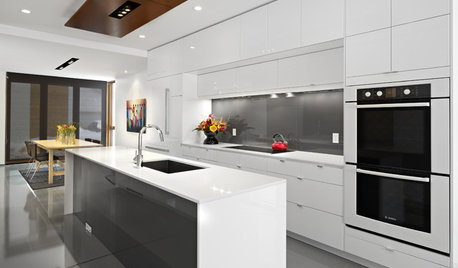
KITCHEN APPLIANCESFind the Right Oven Arrangement for Your Kitchen
Have all the options for ovens, with or without cooktops and drawers, left you steamed? This guide will help you simmer down
Full Story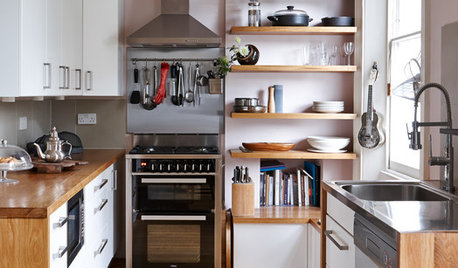
MOST POPULAR99 Ingenious Ideas to Steal for Your Small Kitchen
Make the most of your kitchen space with these storage tricks and decor ideas
Full Story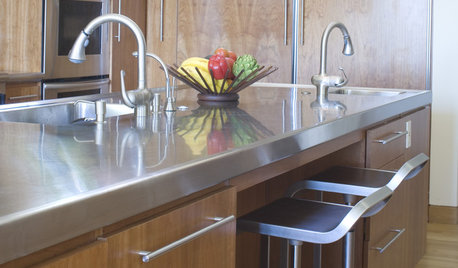
KITCHEN DESIGNDesign an Easy-Clean Kitchen
"You cook and I'll clean" might no longer be a fair trade with these ideas for low-maintenance kitchen countertops, cabinets and floors
Full Story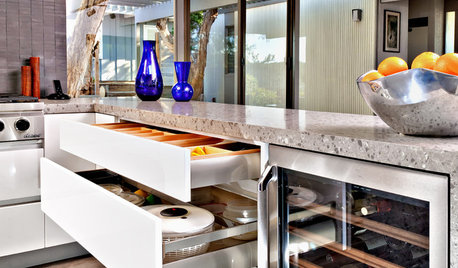
KITCHEN CABINETS9 Ways to Configure Your Cabinets for Comfort
Make your kitchen cabinets a joy to use with these ideas for depth, height and door style — or no door at all
Full Story
DECORATING GUIDES25 Design Trends Coming to Homes Near You in 2016
From black stainless steel appliances to outdoor fabrics used indoors, these design ideas will be gaining steam in the new year
Full Story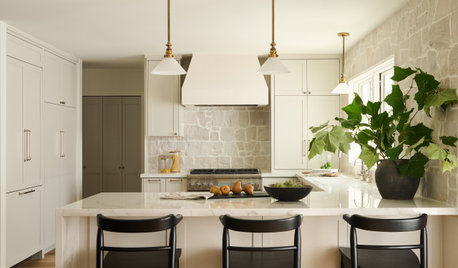
KITCHEN WORKBOOKHow to Remodel Your Kitchen
Follow these start-to-finish steps to achieve a successful kitchen remodel
Full Story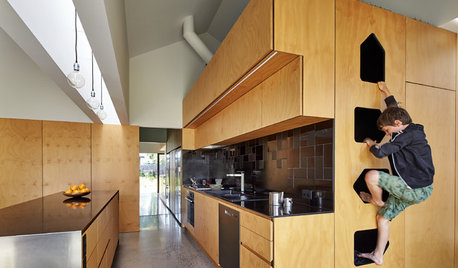
MOST POPULARKitchens Down Under: 20 Design Ideas to Inspire You
These popular Australian kitchens have exciting ideas to borrow no matter where you live
Full Story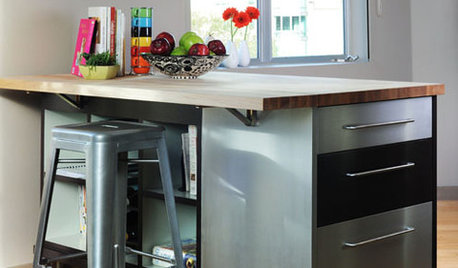
KITCHEN DESIGNSteel Yourself: Industrial Kitchen Islands Are On a Roll
Sleek mobile islands can make traditional built-ins seem downright outmoded. Find the right idea for your kitchen
Full Story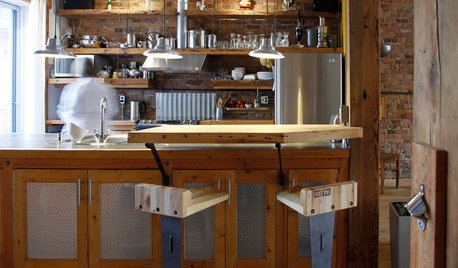
KITCHEN DESIGNPersonal Style: 50 Clever Real-Life Kitchen Design Details
Get ideas from savvy homeowners who have a knack for creating kitchens celebrating personal style
Full Story




kaseki